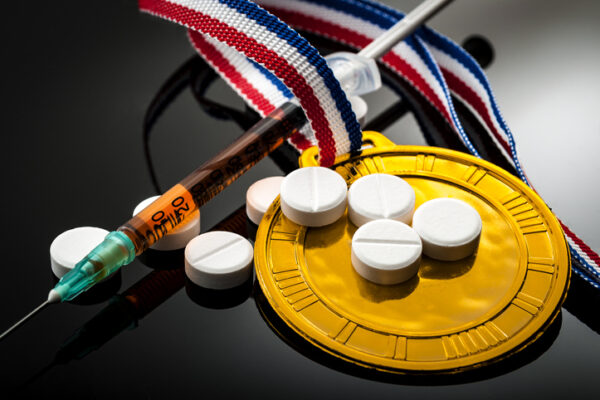Win is a three letter word that is the driving force behind most serious athletes. Winning boosts their confidence, gives satisfaction to those who are aiming to achieve certain goals and helps many recognize their full potential. Many athletes dream of becoming a member of a professional team, thus causing them to participate in activities such as engaging in the use of performance-enhancing drugs. This has become common in a world where your best is never good enough–especially in the Olympic realm.
The Merriam-Webster dictionary defines a performance enhancing drug as a substance that is used illicitly to improve athletic performance.
According to the Mayo Clinic, there are six main categories of PEDs: anabolic steroids, androstenedione, human growth hormone, erythropoietin, diuretics, creatine and stimulants.
Although these substances seem like they help athletes, the benefits do not outweigh the side effects. Some of the notable side effects for men include: infertility, prominent breasts, enlargement of the prostate gland and shrunken testicles. Side effects for women include: a deeper voice, increased body hair and baldness.
While these drugs can improve agility, stability and speed, the side effects can be long-lasting, sometimes irreversable and may cause a persistent drug dependence.
Russia has recently been under fire for its olympic team members using PEDs. The Associated Press reports 15-year-old Russian figure skater, Kamila Valieva, was caught in the center of this controversy as a banned substance was found in her system.
Doping and the use of PEDs by Russian olympians has increasingly become a problem over the years. The mere fact that a 15-year-old used a PED is not only alarming but sad.
The blame has come down to a single athlete, but this is a systematic problem for Olympic participants from Russia.
Using PEDs in the Olympics is not only wrong, but it creates an unrealistic threshold for athletes to reach. Those who do not have help from added stimulants have to work harder to achieve the same level of those who use drugs. This creates an uneven playing field and also makes it harder on those deserving to advance in their prospective sports.
In a world where people are constantly having to prove themselves to the next, the use of PEDs is not uncommon. People feel as if they have to do anything necessary to achieve their goals
The scary part about that is that younger individuals are starting to do the same. The expectations and competition among Generation Z are higher than ever. The use of social media adds fuel to the already lit fire of transitioning into adulthood. The perception of one by another is misconstrued and highly flawed.
This generation does not realize that the human body is not supposed to be perfect. Comparison to other individuals makes it almost impossible for those who are struggling with self-image to accept who they are, thus inspiring use of PEDs and other drugs that can alter the appearance and function of the body.
As soon as society realizes that they are a part of the problem, then they cannot only move away from using substances that could be detrimental to the human body but getting rid of them for good. You are only as good as your weakest link and if that means that everyone has to work harder to achieve their goals, doing it naturally is always the best solution.































